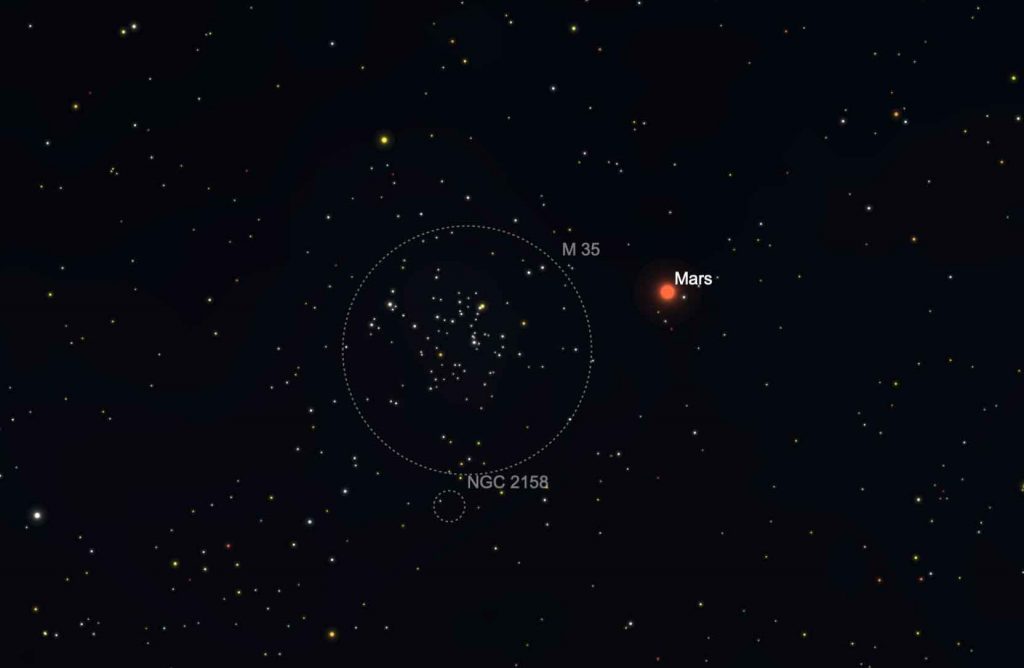Sky Report: April 19 – April 25

Venus is starting to return to the evening sky. You might see it extremely low in the west a few minutes after sunset, especially if you use binoculars and have a flat horizon. Mercury joins it next week, and more on it then.
Orange Mars is half-way up the western sky as darkness falls. It’s no brighter than the brighter stars, so you need to know the constellations to pick it out. It’s in easternmost Taurus, and it makes a nice equilateral triangle with two orange stars, Aldebaran, also in Taurus, straight below it, and Betelgeuse in Orion the same distance to the lower left at the 8:00 position. Mars is slightly the fainter of the three.
Jupiter is easily visible in the southeast in the morning, about a quarter of the way up the sky in late morning twilight. Fainter Saturn is 15° to the right of Jupiter.
If you have a telescope or binoculars watch Mars pass very near the star cluster M35 on the nights of the 25th, 26th, and 27th. At closest Mars is ½° from the center of the cluster and then you can see both in a low-power telescope eyepiece or any binoculars. M35 is a collection of a few hundred stars some 3,000 light years from earth; they were born together about 100 million years ago and are traveling through space together. M35 is bright enough to see without a telescope on the darkest of nights, which these aren’t with the moon so bright. Uncle Google can tell you more about this star cluster – and almost everything else in the sky.
Mars is 180 million miles from earth, so distant that light – and radio waves – take 16 minutes to travel from the earth to Mars and vice versa, one way, which is why the rovers on Mars have to be able to act independently of mission control on earth; the round-trip communication time is over a half-hour.
April’s Lyrid Meteor Shower peaks on the morning of the 22nd, but it’s for specialists only and too few meteors fall to bother about. This year the nearly full moon ruins it anyway. The moon is in line with the stars Castor and Pollux in Gemini on the 19th (Castor is closest to the moon), above the star Regulus in Leo on the 21st, and above Spica in Virgo on the 25th.
The Sky Report is presented as a public service by the Stellar Vista Observatory, a nonprofit organization based in Kanab, Utah, which provides opportunities for people to observe, appreciate, and comprehend our starry night sky. Additional information is at www.stellarvistaobservatory.org. Send questions and comments to
John@StargazingAdventures.org.






Comments are closed.